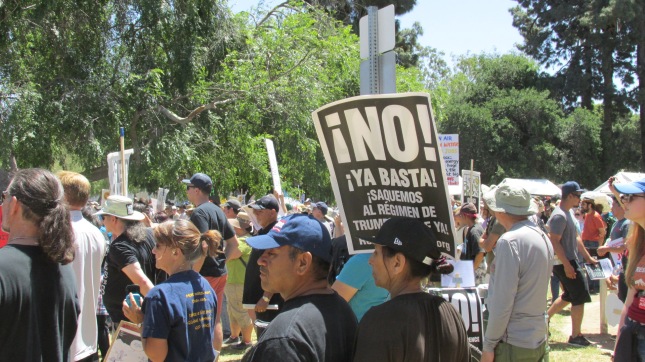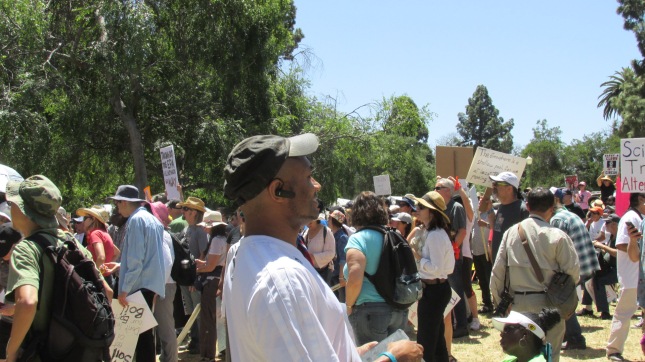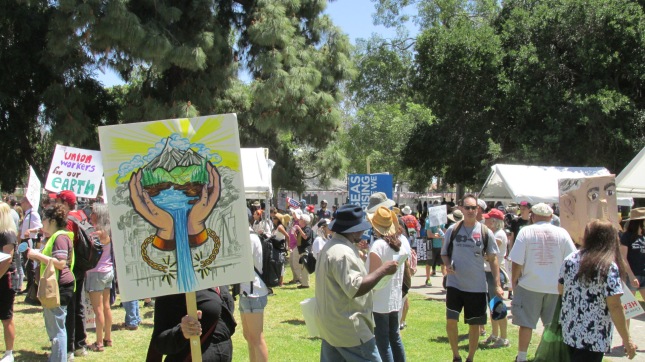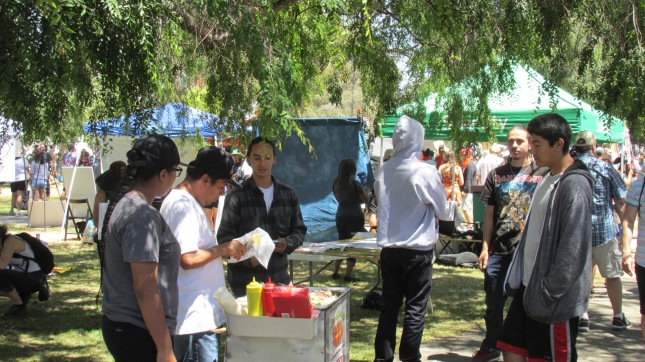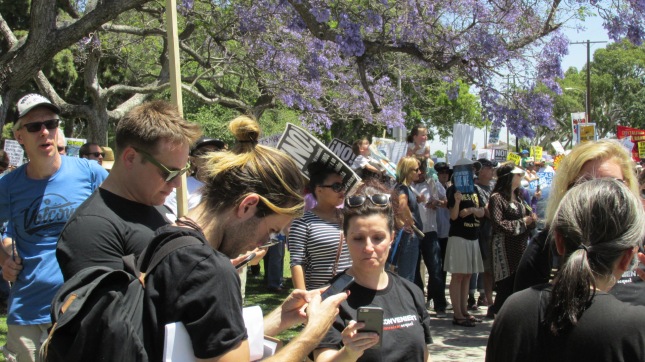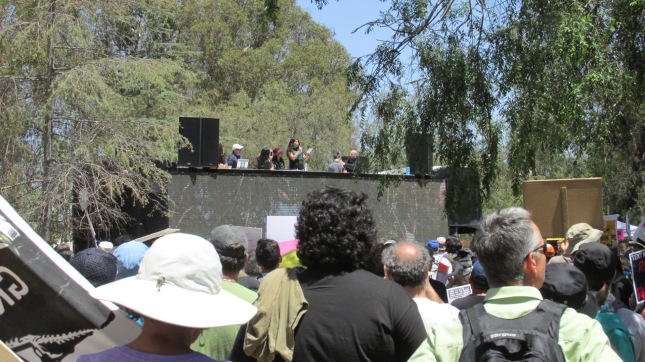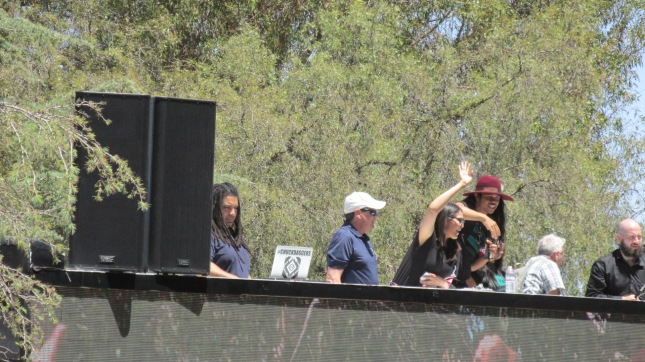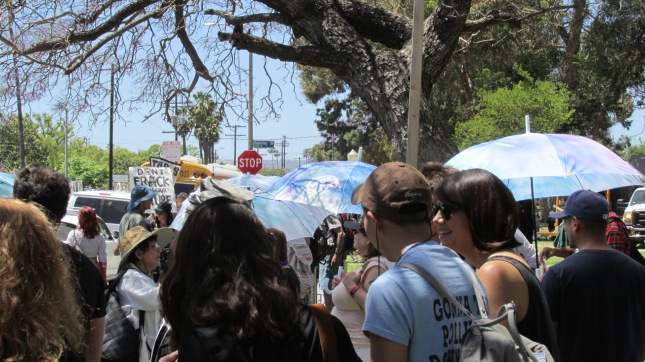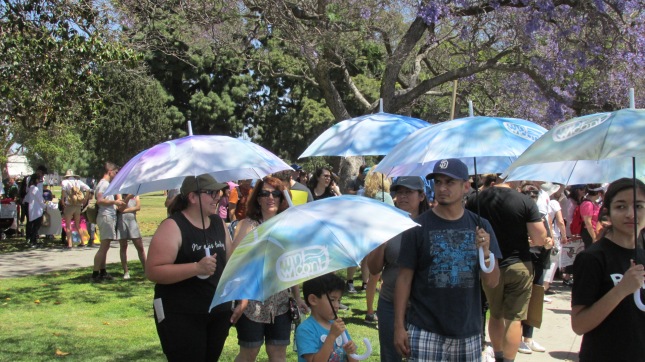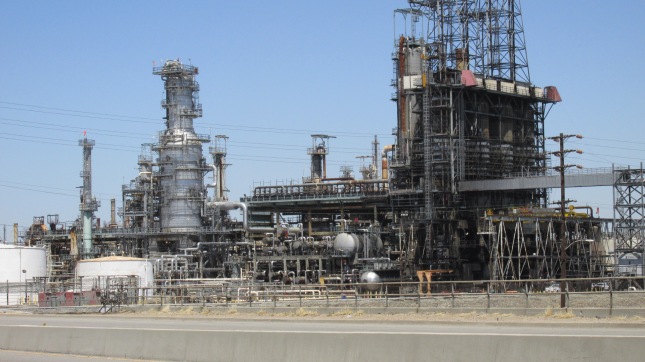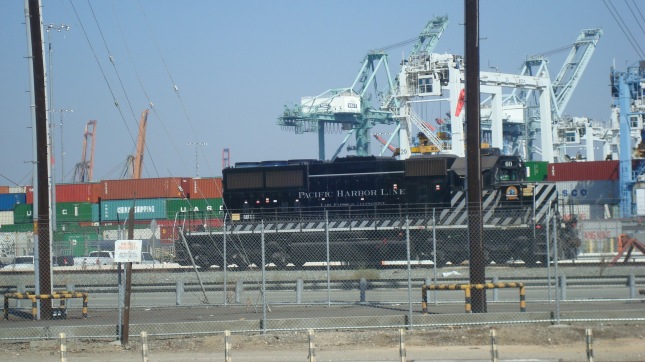
I have to admit I was initially ticked off that I couldn’t get into the LA City Council meeting on Friday. I’d taken the subway to Downtown that morning because I wanted to speak about an item on the Council agenda. But when I got to City Hall, I found a huge line of people crowding the entrance, and when I finally got inside it turned out they weren’t allowing any more people in. The Council chambers were full up.

The crowd at the entrance to City Hall.
But sometimes you have to be flexible, and actually I was glad I made the trip anyway. It turned out that hundreds of people had shown up that day because they were worried that their jobs were going to be taken by robots. Earlier this month the Board of Harbor Commissioners approved a permit that would allow shipping giant Maersk to automate much of its operations at the Port of LA. But Councilmember Joe Buscaino, who represents the area, wrote a motion asking the City Council to assert jurisdiction in the matter and send it back to the Board for reconsideration.
It’s easy to see why people who work at the Port are freaked out. Maersk isn’t the first shipping company to push for automation, and it won’t be the last. Hundreds of jobs could disappear if Maersk goes forward, and as more companies follow suit it will probably lead to the loss of thousands of jobs. This, in turn, would be a devastating blow to San Pedro and Wilmington, where a lot of the local economy depends on those jobs.

Workers gathered on the lawn outside City Hall.
The crowd that showed up at City Hall on Friday was mostly made up of members of the International Longshore and Warehouse Union. Many of them wore T-shirts and carried signs protesting the move to automation. Those who couldn’t get inside gathered on the lawn outside City Hall where audio of the meeting was broadcast over a sound system. You could hear speaker after speaker telling the Council that they had to take action, and the meeting was frequently disrupted by roars of approval from those who had made it inside.

The ‘Yes to Boots, No to Robots’ T-shirts were a popular item.

Lots of folks carrying signs.

It’s true, robots don’t pay taxes.
In the end the Council voted unanimously to send the matter back to the Board of Harbor Commissioners for reconsideration, but the issue is far from resolved. Even if the Board changes its mind and decides to rescind the permit, Maersk claims it’s legally entitled to go ahead with the conversion anyway. They argue that other ports are automating and that they have to do the same if they want to stay competitive. And another complication is that for years the City of LA has been pushing shippers to move from diesel to electric technology. There are huge pollution issues in Wilmington and San Pedro because the Port of LA burns massive amounts of fossil fuels. Maersk’s conversion to automation has the potential to radically reduce emissions.
This is really just one more battle in what promises to be a long and painful war. Automation advocates claim that machines don’t just take jobs, that they can also create jobs, but no one has been able to spell out exactly how that’s going to happen. Academics say that more automation will drive increased economic activity which will bring new employment opportunities, but they don’t go into details except to say that the unemployed can move into the service sector. Really? Retailers are already replacing clerks with machines. Transit network companies like Uber are planning to shift to driverless cars. And fast food chains are quickly building automated outlets. In classic fashion, economists who make six figures are telling low-income workers not to worry about automation, because in the long run it will boost GDP and everyone will be a winner. But people who live in the real world have been dealing with wage stagnation for years, while their paychecks are being eaten away by rising housing and healthcare costs.
The workers at the Port of LA are right to be scared.
For more details, check out this story from the LA Times.
City Deals Blow to Automation Plan at the Port of LA


